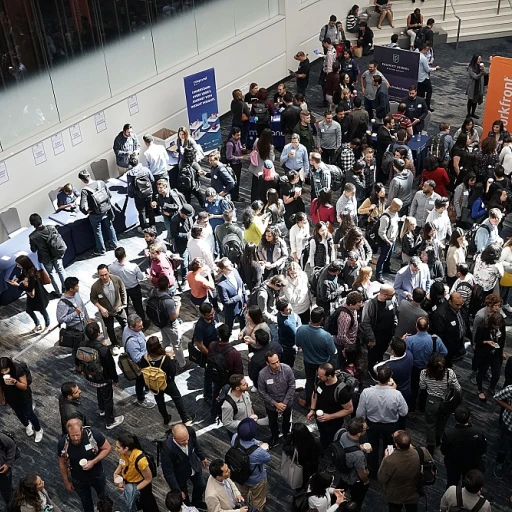Understanding Labor Tracking
The Basics of Tracking Employee Time and Attendance
Understanding how labor tracking works is essential for businesses seeking to optimize productivity and streamline operations. At its core, labor tracking involves monitoring and recording the time employees devote to various tasks and projects. This process typically utilizes tools such as time tracking software, mobile apps, and time clocks. These tools enable precise tracking of work hours and provide real-time data for effective workforce management.
Time tracking systems offer a user-friendly way for employees to clock in and out, whether they're using a traditional time clock or a mobile app. This tracking helps businesses manage attendance tracking and ensure accurate payroll by recording precise hours worked. Modern labor tracker solutions come equipped with features such as GPS tracking and project management integration, which help provide a fuller picture of employee activities and labor costs.
Key features of modern tracking software include automated time attendance recording and seamless integration with payroll systems like QuickBooks. By selecting a system with the right features, businesses can tailor labor tracking to their specific needs. Additionally, many providers offer a free trial, allowing companies to test the system's effectiveness and user experience before committing to a purchase.
Empowering your business with the right labor tracking tools can significantly improve productivity and ensure efficient use of resources. If you're interested in exploring more about mastering time, efficient management tools can play a pivotal role in ensuring that your workforce operates at peak efficiency. For strategies on enhancing time management, check this
resource.
Benefits of Labor Tracking in Work Tech
Exploring the Advantages of Labor Tracking in Modern Work Environments
Labor tracking has become an essential component for companies looking to optimize productivity and manage labor costs effectively. The implementation of labor tracking systems offers numerous advantages that address both the operational and financial aspects of an organization.
One of the primary benefits of labor tracking lies in its ability to provide accurate time tracking, which ensures precise payroll processing. By leveraging tracking software and mobile apps, businesses can monitor work hours, attendance, and project timelines in real-time. This not only improves the accuracy of time-attendance records but also minimizes the risks of time theft and manual errors in payroll calculations.
Moreover, the integration of features like GPS tracking and time clock apps adds another layer of efficiency. These tools enable the management to keep track of employees’ locations and hours worked, providing actionable data to optimize workforce management. This real-time insight is invaluable for businesses that operate across multiple sites or have remote employees.
Labor tracking systems also empower companies to harness valuable data for better decision-making. With the help of user-friendly interfaces and customer support, teams can learn how to use these systems effectively, leading to more informed workforce management decisions. Easy access to comprehensive labor data allows organizations to identify productivity trends, allocate resources efficiently, and implement necessary improvements.
Additionally, modern labor tracking solutions offer flexibility with seamless integration into platforms such as QuickBooks. This offers businesses convenience by linking labor costs directly to their financial systems, ensuring that payroll management is both streamlined and accurate.
For those looking to incorporate these technologies, many tracking solutions are available with a free trial, enabling businesses to explore key features before committing to a specific tool. With an increasing range of options available in the app store, companies can find user-friendly solutions tailored to their specific needs.
To further explore how effective time management can influence overall productivity, you may want to visit the
mastering time management for fitness enthusiasts guide, which provides insights applicable across various industries.
Challenges in Implementing Labor Tracking Systems
Navigating the Hurdles of Implementing Labor Tracking Systems
Implementing labor tracking systems in a work environment can vastly enhance productivity by offering a systematic approach to monitor time and attendance. However, various challenges may emerge, requiring careful consideration and strategic planning.
One main obstacle is the integration of tracking software with existing payroll systems. Many organizations rely on established payroll solutions like QuickBooks, making it crucial to ensure that the new time tracking software can seamlessly interact with these systems. A non-compatible system could lead to errors in workforce management, disrupting payroll operations.
Employee acceptance is another significant hurdle. Transitioning to a new system often requires employees to adapt to different features, such as GPS tracking for mobile app attendance. To mitigate resistance, fostering a user-friendly interface and offering comprehensive training are vital. Employees need to learn how to efficiently use time clock apps and other labor tracking tools to ensure accurate attendance data.
Moreover, data privacy and security concerns can deter the implementation of such systems. It's essential to establish a robust security protocol that safeguards employee data, especially when using apps available in the app store. Ensuring transparency by clearly communicating how the data will be used can foster a more trusting environment.
Finally, technical issues pose a common challenge. Poor customer support and complex software interfaces can hinder smooth operations. Choose systems with a free trial to evaluate the key features and ease of use. Reliable customer support ensures swift resolution of any issues, helping maintain consistent tracking of work hours and labor costs.
Implementing an effective labor tracking system requires overcoming these challenges through strategic planning, user-friendly design, and robust security measures. For insights on enhancing efficiency in other industrial processes, explore our
article on metal cutting coolant solutions.
Technological Solutions for Labor Tracking
Technological Innovations in Labor Tracking
In the ever-evolving work tech landscape, technological solutions for labor tracking have made significant strides. These advances are designed to address some of the challenges businesses face in managing their workforce effectively. Here's a closer look at how technology is transforming labor tracking:
- Time Tracking Solutions: Various tracking software solutions have made tracking work hours more precise and user-friendly. With mobile apps, employees can easily clock in and out, and managers can monitor attendance in real time. These apps, often available on app stores, come with features like GPS tracking to corroborate employees' clock locations, ensuring accuracy in location-based attendance tracking.
- Seamless Integration with Payroll Systems: One of the key features of modern labor tracking solutions is their integration with payroll software. This ensures that tracked work hours are accurately reflected in payroll processing, reducing the risk of errors and saving administrative time. Solutions like QuickBooks sync seamlessly with labor tracking apps to streamline payroll management.
- Project and Workforce Management: Many labor tracking tools also offer project management features, allowing businesses to assign tasks and monitor progress within the same platform. Workforce management becomes more efficient as managers gain insights into labor costs and resource allocation, ultimately boosting productivity.
- User-Friendly Interfaces and Customer Support: To ensure adoption, these technologies prioritize user experience. Labor tracker applications often boast intuitive designs that make them easy for employees to navigate. Additionally, reliable customer support ensures users receive the assistance needed to troubleshoot any technological hiccups.
- Data-Driven Decisions: With comprehensive data collection and analysis, businesses can make informed decisions to optimize workforce efficiency. Tracking software provides valuable insights into employee performance, helping to identify trends and areas for improvement.
- Free Trials and Assessments: Many labor tracking applications offer free trials, allowing businesses to evaluate the tool's efficacy before committing fully. This approach not only reduces the risk associated with implementation but also aids in selecting the right tool to meet specific business needs.
As we continue to embrace new technologies, it's clear that effective labor tracking is more attainable than ever. Companies that leverage these solutions can expect smoother operations, better time management, and ultimately, a more productive workforce.
Best Practices for Successful Labor Tracking
Implementing Robust Systems for Accurate Monitoring
Effective labor tracking demands more than just selecting the right technological solutions. Engaging in certain practices can make a significant difference in ensuring precise and seamless tracking of work hours. These practices also help in maximizing the robustness and user-friendliness of tracking software.
- Streamline Integration with Existing Platforms: Choose tracking software that effortlessly integrates with existing platforms like payroll and QuickBooks. This facilitates smooth data transfer and minimizes errors in labor costs calculation.
- Leverage Mobile Apps: Mobile apps provide real-time attendance tracking that allows users to clock in and out with ease. This feature is especially valuable for workforces that involve constant movement and off-site projects.
- Ensure GPS Tracking for Accuracy: Incorporating GPS tracking can greatly enhance accuracy in recording the work locations, ensuring compliance and reducing payroll discrepancies.
- Customize Key Features: Identify and customize key features of the tracking app to match the specific needs of the workforce. This includes settings for approvals, notifications, and reporting.
- Provide Comprehensive Training: Ensure all users understand how to efficiently navigate the software. Regular training sessions reduce mistakes and improve user adoption.
- Implement Regular Reviews: Conduct regular reviews of tracking data to identify and address any inconsistencies. This continuous improvement approach contributes to more accurate management of work hours.
- Seek Feedback and Enhance Customer Support: Encourage feedback from users to improve the interface and features. Reliable customer support is crucial for addressing any issues promptly.
- Take Advantage of Free Trials: Many tracking solutions offer a free trial period. Utilize this to evaluate app store offerings, assess usability, and examine their alignment with business goals.
By adopting these best practices, companies can enhance their labor tracking efforts, thereby driving productivity and optimized workforce management. With a focus on effective systems and comprehensive training, businesses can make labor tracking a cornerstone of efficient operations.
Future Trends in Labor Tracking
Future Innovations in Labor Tracking Technologies
The landscape of labor tracking is ever-evolving, with new technologies continually emerging to streamline workforce management. As organizations seek to optimize their operations, several trends are transforming how labor is tracked and managed.
One of the most significant shifts is the integration of real-time data and GPS tracking capabilities into labor tracking systems. These features offer unparalleled insights into work hours and attendance, allowing organizations to make more informed decisions. The mobile app revolution has further fueled this trend, making it easier for employees to clock in and out, thereby improving the accuracy of time attendance records.
Another trend is the growing emphasis on user-friendly interfaces. As labor tracking software becomes more sophisticated, designers are prioritizing easy navigation to ensure users can swiftly access key features. This focus aims to enhance management and employee experiences, reducing the time spent on operational tasks.
Additionally, the seamless integration with payroll software such as QuickBooks is becoming a standard expectation. This synching allows for automatic updates on hours worked and labor costs, reducing the administrative burden and minimizing errors associated with manual data entry.
Customer support is also set to play a pivotal role in labor tracking advancements. With increased use of tracking software, robust support systems will help users learn new tools, troubleshoot issues, and maximize productivity. Many providers now offer free trials, allowing businesses to explore different platforms and select solutions that best meet their needs.
Overall, labor tracking technologies are moving towards more comprehensive workforce management solutions, with enhanced connectivity and functionality at the forefront of this evolution. As these innovations become more accessible, they hold the promise of driving efficiency and productivity across various sectors.












